JUPI-WHAT? Shooting Jupiter Lenses on the Leica M9
By Robert Chisholm

There is a certain allure and mystique to rangefinder photography. The obvious “whatsit”? The mystery of why any self respecting photographer would shoot a “manual everything” rangefinder in a modern world of do-it-all dSLRs. If that question is not enough of a head scratcher for you, another is why anyone who pays top dollar for a camera would then work with any lens other than the latest and greatest Leica glass? Well, I can not answer the first question, only to say that I am either fool or a genius (opinions vary) for choosing a $7k camera that won’t even focus for me! But shooting non-Leica glass? There are actually good reasons to choose and use old(er), non-Leica lenses.
Because Leica rangefinder cameras are manual focus and because the lens mount from the first screw mount lenses can be adapted to the modern “M” mount, lens choices are vast. This is fantastic for us; A photographer can research and choose lenses that draw in a fashion that is visually and emotionally appealing, sometimes with a “look” you just can’t get from contemporary glass. Leica glass also tends to be very expensive and often someone can get an entire lens outfit for the price of one new Leica lens.
The obvious drawback to legacy glass is that the designs, glass and lens coatings might be technically inferior to current, modern equivalents. While this could be very important to a landscape photographer, these “flaws” may be less significant or even desirable to a portrait or street artist.
How low can you go: How old? How inexpensive? How poorly built? And why would anyone with an expensive camera like the M9 even want to ask such silly questions?
Well, the answer to the last question is because you can, and it’s amusing! There is also a bit of romance to old lenses and a nostalgia that comes with using equipment made by someone from another era. I mean, I am using lenses built by a man or woman who has probably moved on from this lifetime, who lived in a country that only exists in the history books and at a time when things like computers weren’t imagined and penicillin was the only antibiotic. It was a time when my dad walked ten miles to school every morning in the snow barefoot and up hill both ways. That’s cool!
Jupiter lenses: What are they and what do we know?
While the story of Russian-made rangefinder cameras and lenses is waaaay beyond the scope of this article, one brand seems to stand out: Jupiter. The used market seems flush with jupiter lenses, especially the 50mm Jupiters, the Jupiter-3 (f1.5) and Jupiter-8 (f2).
Now, in rangefinder world, the two focal lengths people seem to love most are the 50 and 35. I know some people are true blue 35mm folks, but I’m a 50 guy. Don’t get me wrong, I enjoy a good 35 as much as the next shooter, but if I could only have one lens, it would be a 50! Therefore, the 50mm Jupiters attracted me, and I wanted to find out more.
A little time spent googling the net and lurking in the forums revealed that the Jupiter 8 is reported to be a decent performer optically, at least on film, with the Jupiter 3 being more hit or miss. Both lenses suffer from poor overall mechanical builds, reflecting the Soviet era shoddy workmanship. Sounds really great so far!
Digging a little deeper revealed more concerning details: People note focus issues on the digital rangefinder (ie., the M8). Specifically, the lenses are known to back focus a few inches. The Jupiter 3 is a sonar design and, like the modern Zeiss, has it’s own inherent tendency to focus shift at middle apertures. This is a separate issue from the aforementioned back focusing, but does complicate the overall focus picture with this lens. I suspect that the back focusing issue of both lenses exists on film as well, but is magnified or at least seems to be magnified with the digital cameras given our ability to pixel peep (and to take and critique photos more readily).
Enter Brian Sweeney, a moderator on the rangefinder forum. Brian happens to be a Jupiter lens aficionado and is THE resident online Jupiter expert. He also is one heck of a nice guy! Brian informed me that the difference in build specs between the Russian rangefinder cameras and our beloved Leicas is the root cause of the back focusing issue, and that the lenses, when shimmed properly, can be adjusted to focus correctly! Bingo, big problem solved!
Now, purchasing a Jupiter 50mm lens is both easy and somewhat difficult. The Jupiter 8 sells for about 25 bucks and the Jup 3 is about $120-150 — both readily available on “the Bay.” Easy schmeasy. The hard part is the random chance of getting a dud versus a stud, optically speaking. Nobody likes to throw their money away, but just try returning a lens to some guy from Where-The-Heck-Is-It-Stan — Ain’t gonna happen. Cross your fingers!
OK, so you fancy yourself an eBay gambler and the focus issues are more of a mole hill than a mountain. The lure of the elusive 50mm lens is calling and you’ve just got to see if these Russians can make anything besides vodka and borscht. Mandler who?
Jupiter-8: the Small, Sexy, Retro 50
Right up front, I’m going to say the Jupiter 8 is one sexy lens on a black M9! While the older Jupiters are silver, then later ones are black, and the color matches the flat black paint on the M9 to a “T.” Color coupled with the rugged Black M9 vulcanite covering gives an almost military impression which I just love. The two look like they were made to go together. That either says very little for Leica, or a whole bunch for those Ruskies…
The minimum focus distance on the standard Jupiter 8 is 1 meter; While this distance was adequate on the M8 due to the crop factor, I often find myself needing or wanting a little bit closer focusing for my general 50mm shooting with the full frame M9. Fortunately, not only did Brian Sweeney shim my Jupiters for me, he even improved the Jupiter 8 to allow a minimum focusing distance of 0.8m. Sweeeeeeet!
The Jupiter 8 makes a great walk around lens, being small and unobtrusive. The focusing action is smooth and the simple focusing ring, while thin, provides adequate grip. The aperture ring is the weakest part of both Jupiters, as there are no detents or reassuring clicks and once you set an aperture, any little bump can and will turn the aperture ring. One has to get used to checking the aperture ring often. Perfectionists and/or the easily frustrated need not apply!
So, down to the brass tax: Are the images from the Jupiter 8 any good? In a word, and with caveats, yes. The images are indeed very, very good.
First, my perspective: We all have those Holy Grail lenses, the lenses that, for one reason or another, we just adore and against which all similar focal lengths are compared. For me, for general purpose 50’s, the Holy Grail if you will is the Zeiss 50 f2 Planar. I consider faster 50’s specialty lenses as they are usually larger and optically best at wide apertures. The summiluxes, noctiluxes, noktons and sonars all fall into this specialty category. I’m not saying you can’t shoot a noctilux all day and at f4, but a small 50 summicron might fit the bill better for all day shooting at f2-f8 apertures.
Being a 50mm enthusiast, I have had the pleasure of owning (my wife might say a problem with buying) quite a few 50mm lenses: the modern 50 summicron, Voigtlander 50 f2 heliar, Voigtlander 50 1.1 and 1.5 noktons, Canon 50 1.4 and 1.2 ltm’s, Konica Hexanon 50 f2, an older 50 collapsible summicron, the 2 Jupiters in this article, and the Zeiss planar. These days, while the planar spends most of the time on the camera, I like having a faster 50 when I want to shoot low light or portraits with especially shallow depth of field.
While some folks enjoys landscapes and others shoot street, I photograph mostly candids/people/fashion. I don’t need my lenses to be the absolute sharpest, but I do look at how a lens renders skin, colors, bokeh, and 3-d pop. Skin drawing is of top importance to me – a lens that is overly harsh on skin is generally a deal breaker. Many a 50 has come and gone simply based on skin rendering alone. The M9, in comparison to the M8, seems to reveal the strengths and weaknesses of a given lens, and what might have been a minor annoyance on the M8 often becomes a glaring flaw on the M9. Frustrating? Indeed! I have had to become much more choosy with my lens selections for the M9.
So I shoot 50s and I shoot people. For this article, as I know people get sick of seeing shots of someone’s family, I tried to include a few shots of non-people taken with the Jup 8 while on a recent trip to the zoo. You know, to mix it up. I should also mention that I post-process all my images to taste, preferring to use tools such as Lightroom, Exposure, and Silver Effex. None of the photos presented are raw and all have been edited to some artistic effect. Therefore, things like color cast and contrast have been mucked with.
The Jupiter 8 images are very pleasant to work with. I like the medium contrast files and the clarity. The bokeh is what I would label “energetic” while not being overly nervous or jittery. The bokeh is not, however, buttery smooth. The color rendition is somewhat cold or flat, but there is good 3-d pop. As I edit in film emulators, such as Exposure, flat files are often a nice starting point. Skin drawing is average, but thankfully not harsh. As to sharpness wide open, my copy of the lens is somewhat soft at f2, but does sharpen up by f4. The lens is of similar performance to the Voigltander 50mm heliar (no slouch) and the older collapsible 50mm summicron (which was of very low contrast, however). The lens does not come close to the 50mm planar, which I find to be the absolute best 50 f2 on the market optically. But the Jup 8 cost, with shipping and CLA charges factored in, all of $100 — It has real bang for the buck! Moreover, the Jup 8 is just plain fun to shoot, and I especially like the black and white photos it produces — They look very special and interesting to my eyes!
How about that Sonar?
Let’s move on to the main course, to the big boy, optically speaking: The Jupiter 3, f1.5 Sonar! Physically, this lens is actually quite small. It is just a bit bigger than the Jup 8, and much smaller than the f1.5 nokton and Canon 50 f1.4. My copy is an older chrome version, and the same overall comments about physical attributes and build apply. The aperture ring is a touch tighter on the Jup 3, so the aperture tends to stay set, which is nice. Minimum focus distance is 0.9m.
Optically, this lens is surprisingly, um, awesome. Awesome as in a knock-your-socks-off, photo making monster of a lens! The colors, the bokeh, the pop, the character of the lens — all fantastic. Now I can’t compare this lens to the famed noctilux or modern “wunderlens” summilux. But this lens optically out-performs the Voigtlander noktons as well as both of the fast Canons. I shoot it from wide open to f4 and have not noticed any issues with focus shift. Brian adjusted this lens to focus dead on when wide open and it certainly is — Focus on an eye and count the eyelashes!
Skin is drawn gently with this lens, while maintaining good in-focus sharpness. The out of focus areas have have a lovely calm glow that seems somehow old fashioned, as if this lens is still taking photos 50 years ago. Not busy all, which I appreciate.
The Jupiter 3, being a different design than the Jup 8, has a much different look and the lenses actually complement each other quite well.
My verdict on the Jupiter 50’s
What can ya say, other than fun, with incredible bang for the buck?
The Jupiter 8 makes for a cool, small walk-around lens and produces some quality files, especially black and whites (I have provided mostly color files here to show what the lens can do.).
The Jupiter 3 is magical when shooting wide open and continues to be excellent when stopped down. It would excel for anyone who enjoys shooting people and needs something faster than f2. Of the Jupiters, it is the clear lens to own, if you can get a good copy and then have it adjusted to focus properly. The Jupiter 3 is good enough to be one of my main lenses, and has replaced any interest I might have had in trying a Leica fast 50. However, I will be keeping and shooting both the Jup 3 and Jup 8 lenses. They are unique in the images they produce, and frankly, it is a blast to use these relic lenses on my modern M9!
I hope you enjoyed this article as much as I enjoyed writing it. Please continue to support Steve’s site. If you want to see more of my photos, my flickr page is http://www.flickr.com/photos/feros-ferio/
All the best! — Rob Chisholm
[ad#Adsense Blog Sq Embed Image]
I NEED YOUR HELP! YOU CAN HELP SUPPORT THIS SITE TO KEEP IT GOING AND GROWING!
Remember, anytime you follow my links here and buy from B&H or AMAZON, this helps to keep my site going. If it was not for these links, there would be no way to fund this site, so I thank you in advance if you visit these links. I thank you more if you make a purchase! I have nifty search bars at the upper right of each page so you easily search for something at either store! I currently spend 10-14 hours a day working on this site and the only way that I can pay for it is with your help, so thank you! Currently my traffic has been increasing but my funds to pay for the site has been decreasing, so any help would be GREATLY appreciated!
Even if you buy baby food, napkins or toothpicks at amazon it helps this site, and you do not pay anything extra by using the links here. Again, you pay nothing extra by using my links, it is just a way to help support this site, so again, I thank you in advance ![]()
If you enjoyed this article/review, feel free to leave a comment at the bottom of this page and also be sure to join me on twitter or facebook! Also, you can subscribe to my feed at my subscribe page HERE and read these posts in your browser or news reader! Also, the new forums are NOW OPEN on this site so get involved if you like! Thanks so much for visiting my site!



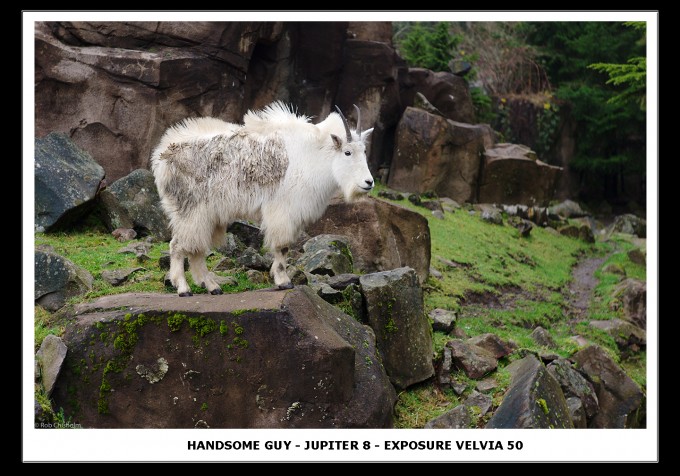
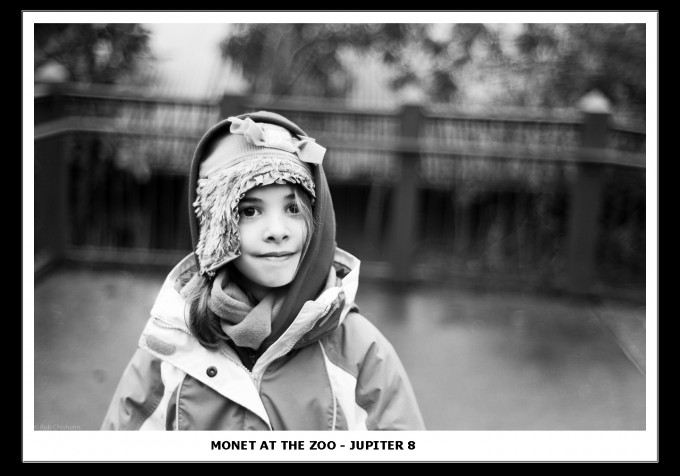

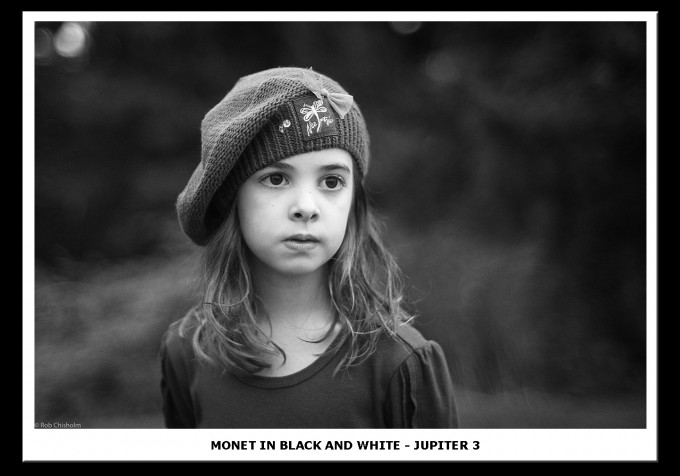

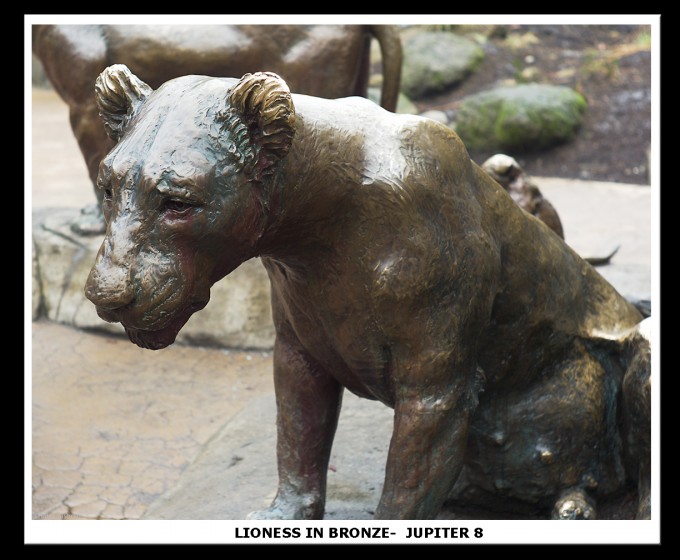
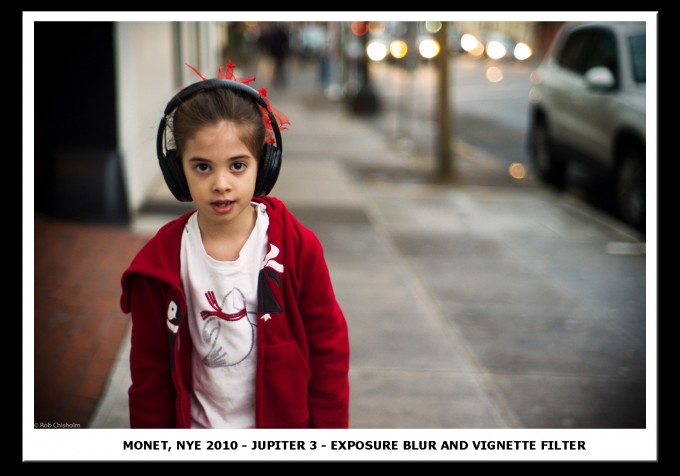


A friend bought a Zorki 4K with Jupiter 8, then decided he preferred the 35mm f2.8 Jupiter 12. Gave me the J8. After receiving a legacy, I bought a 1955 Leica M3 double stroke and a 50mm srew to bayonet adapter. Found a lens hood in a dealers bits and bobs box, and I’m in business. I have found that the lens gives best rendition with traditional mono films – FP4 and Tri-X. 11 years later, I’m still using this outfit. My lens was made in 1975. I’m convinced the lens hood contributes to the performance of the lens. As you say in the beginning of your article, it’s about a ‘look’.
I just read your article and I go along with most of what u say as it proves to me again that only a handful of lenses are capable of serving universal needs like portrait, street, architecture… whatever. I was lucky to get one gem of a Jupiter 8 made in 1957 that looks like it just had left the KMZ factory yesterday and no scratches on both ends detectable even with a 10x magnifier. I first used it for a couple of years with an adapter on my Sony Nex due to its compactness and enjoyed the crisp results. But it didn’t warm my heart, as I’m prefering analogue shooting. (that said, to me the dead sharpest 50mm lens on earth is a 1952 Voigtlaender ‘Ultron’, I put on my Kodak Retina II made in 1948) So I looked for a camera, the Jupiter 8 was made for in the first place and after endless trials and errors I ended up with an ukrainian ‘Zorki 3M’ in near perfect shape. The results – as far as color rendition is concerned – I get from this combi far outperformes everything I ever cought with almost all my Nikkors lenses in 43 years, exept the 2,5/ 105 mm of course, which is my 3nd ‘holy grail’, but that’s another story. But yes, not to forget the ‘Zeiss Biotar 2/58 mm on my Exa that makes Nr.4 on my list of all time greats…..and yes, I really like the Fotos you took with the Jupiter 8! Regards Peter
This is still one of the best articles on Jupit lenses. I’ve since bought two Jupiters (3 and now an 8) and two original Zeiss Sonnars (also f/1.5 and f/2) from Mr. Sweeney. Yes, he’s a super nice guy, and yes, these lenses are all magnificent.
While a bit pricey at $650, it should be noted that Lomography is now selling brand-new Jupiter 3 lenses with better coating and in sturdy brass, rather than flimsy aluminum casings, and they are properly shimmed for Leica and focus down to 0.7 meters. Mr. Sweeney posted some images from his, and I have since ordered mine.
I own the magnificent Leica 50mm f/1.4 Summilux ASPH, but for portraits nothing, NOTHING beats a Sonnar.
Hello,
Acquired an as new Jupiter 8 lens a few weeks back and have been achieving some great results with my trusty old M8. The rangefinder calibration seems spot on and results with flash and daylight have been a revelation that I was not expecting. Portraits have a sublime quality and all for £34 + £25 for a uv/ir cut filter.
The results far outstrip the low cost!
Jupiter 8, silver or black: The proof that the man can manufacture at accessible budget whereby Summicron prices are way out of proportion for a difference that is barely visible…
The SONAR is a device mounted on ships, the SONNAR is an optical scheme… This appens after a lot of jupiter use…
I bought a number of Jupiter lenses about ten years ago when they were really cheap from FSU vendors on eBay – $15 for a camera and a lens on a good day.
I use the lenses on film Leicas. I’ve had no trouble, and good optical performance, with all of about 15 J-8’s (silver and black). Two of my J-3’s don’t focus properly the two that work properly were manufactured prior to 1957, the bad actors after that.
All of my shooting is with screw mount Leicas, usually a IIc.
Generally, I prefer the black rather than the silver versions of the J-8. The silver models are earlier versions and usually have hardened grease in the focus helix which can make focus difficult.
Great review! I just received my J3 lens. I plan to use it with my Zorki 4k.
Though I’m late to the party, I’d like to thank you for a very interesting article.
I have recently acquired a Jupiter 8M (range-finder model) by way of the fact that I bought a Kiev 4 and the Jupiter was included. My lens does have aperture click stops. In fact they are very firm and definite. Perhaps this is a feature of the range-finder version. I have a range-finder version of the Helios 103, and this too has very definite click stops. I haven’t used it yet. I am going to use it on a NEX-6 when I get an adapter sorted out. The 9-bladed iris forms a very interesting 9-pointed star shape at f4.
Build quality seems good. It is a very solid thing.
Correction. I should have more accurately said ‘Contax mount’ rather than ‘range-finder version’.
Nice write up but the author failed to mention the radioactivity of these old Russian/Soviet era lenses. Just FYI.
Neither the Jupiter-3 nor the Jupiter-8 use radioactive glass. The I-61L/D uses Lanthanum. The Collapsible Summicron 5cm F2 with SN below 1.05Million uses Thorium Glass- which will set off a Geiger-Counter and fog film. The Summicron is unusual that the front element is radioactive. The only real danger would be to ingest it.
Just bought a Jup 3 from Mr. Sweeney and should have it next week. CLA’d of course.
I’ve had my Jupiter 3 (expertly tuned by Mr. Sweeney) attached to my M Monochrom almost all of the time since August and it is BY FAR my favorite lens.
Build-quality is USSR shoddy, with thin and cheap-feeling allow barrel and a very imprecise feel to the aperture ring, but none of that matters when you see the images it creates.
This article made me order a jupiter 8 from ebay, it can yesterday, so far for £50 im very happy:
[IMG]http://farm9.staticflickr.com/8492/8420411408_442bf3294d_c.jpg[/IMG]
Hi Rob,
Nice and informative article. Have just brought a J-8 for use on a M8.2 and trying to decide
what is the best 6 bit code to use – any ideas appreciated.
Have you uploaded any 100% crop anywhere, Rob? I found your flickr profile, but all your photos are in lower resolutions.
Rob,
thanks for the great article; i have been – and still am – a strong supporter of old glass on modern cameras, and i totally agree on your take on Jupiters.
I had a J8 for a while, which unfortunately i sold with my CL some time ago; right now i own a J9 (the 85mm f2), and a 1953 J3 – made with the original Zeiss glass!
both lenses give me wonderful images, and their value for money is unrivaled by any other lens (how else can you get a Zeiss lens so cheap??).
i like to use Voigtlanders as well, for the more modern, higher contrast look, but i find that overall the old Jupiters produce an extremely pleasing result (and one can always increase contrast in post editing, without issues).
yes, the tolerances may not be as tight as for other makers, and yes, since they were made to fit on Russian cameras with slightly different specifications, they may need some fine tuning and adjusting (my J3 does not collimate properly at infinity, for example, but it is still useable).
Still, i do highly recommend them!
Hello Rob,
Your wonderful article (really a great job done, Rob!) was written quite some months before I discovered this site, so I read it only today. But I was stunned by the beauty of the pictures, especially taken by the Jupiter 3. The colors, the bokeh, the overall aspect, it’s really jawdropping. So I very much would like to buy a good one, and ask you for some advice. I posses some old Canon FDs and three Zeiss ZMs, amongst them the Planar 2/50 ZM that we both love so much. But I was thinking of buying another lens for shooting people, wide open with narrow DOF, exactly the use that you discribe as being the best of the Jup 3. Yes I’m a typical “manual shooter”.
First of all: I’ve googled the Jupiters and found offers for all kinds of mount. Personally I shoot with a Sony NEX-7. And I noticed those lenses are also offered with NEX-mount, I guess adapter included. You think I just can buy one for NEX, or should I buy one for Leica, and then use my NEX/LEM adapter?
Second: of course I would like to have it focussing well. Do you think your friend Brian would want to ajust it for somebody else too? Who uses a Sony NEX-7?
Third: I live in Belgium. But I have friends in California, who I can have the lens send to (or I could have it send directly to Brian, if that’s possible). They ship to Belgium on a regular basis. That works perfectly for me.
Do you see any problems in this plan? Can you give me any extra advice?
I was thinking strongly of buying a Voigtländer Nokton, but I like the aspect of the Jupiter pictures more. Colors and bokeh please me very much. So I really hope, that I can pull this off (to get one in good working condition).
Thanks in advance!
Great article indeed! As a user of both Leica and FSU gear I can perhaps shed some light about the different J3’s that were produced over time. From the ones I used on my Leica’s, the ones produced after 1958 didn’t need to be shimmed or other wise altered for clearing focussing on all distances. The ones that can give problems are those made from 1947 – 1958. The latter ones had slightly different barrel designs which in my view is providing slightly out of focus issues when used on Leica’s and even on FSU camera’s. Although I have J3’s from before 1958, you are lickely to find ones with better coatings and glass post 1958 (I am still in search of a nice 1970’s black one!) .
As for J8’s and J3’s I always pay a premium to get a lens without scratches and/or cleaning marks, and even with a premium they are relatively very cheap compared to Leica or Zeiss glass (you cannot appreciate these lenses fully if you use a scratched up one). Further there is a difference with lenses produced for the local FSU market and the export lenses: all export lenses were coated, local lenses are mostly uncoated (but nice as a collectors item I guess).
I am not in favor of shimmed or other wise tampered lenses, the shimmed lenses have drilled out barrels, and ones perfectly shimmed for one camera e.g. a Leica, they can’t be used anymore on another camera e.g. a Zorki. Further the shimmed lenses only work correct on short distances but are not working properly on infinity anymore.
Hallo Ron, ik ben zeer geïnteresseerd in een goed J3 exemplaar voor m’n NEX-7. Hoe ga ik best te werk, denk je? Wat is jouw mening over focussing problemen in combinatie met de NEX-7?
Dag Dirk,
Ik gebruik de J8 en J3 op een Leica M8.2. Met de Nex 7 of Nex 5 heb ik geen ervaring. Mocht je geinteresserd zijn. Ik heb inmiddels een hele collectie van deze lenzen en wil er best één verkopen. Van 1961 heb ik er zelfs 2. Al mijn lenzen hebben mint of near mint glas, daar selecteer ik de lenzen op. Deze lenzen hebben een dusdanig goede prijs (vergeleken met de dure Leitz en Zeiss broertjes en zusjes) dat je beter wat meer kunt betalen voor krasvrije lenzen dan de lenzen met veel krasjes (of poetsvlekken). Hebben de Nex camera’s niet een crop factor van 1,5?
gr.Ron
Hallo Ron,
Inderdaad, de crop factor is 1,5. Maar ik vind een 50mm toch nog steeds heel belangrijk, omdat dit het formaat is met een natuurlijk perspectief.
Hoe zit het qua aansluiting? Ik heb geen idee welk formaat deze Jupiters hebben. Zelf gebruik ik een NEX/M adaptor voor m’n Zeiss lenzen, dus denk ik dat dit wel zal lukken, wellicht met 2 adaptors boven mekaar.
Ik ben inderdaad geïnteresseerd om er eventueel één van je over te nemen, als het echt een goed exemplaar is. Ik ben niet geïnteresseerd in een vintage lens, die maar zus en zo presteert, maar die men tolereert “omwille van z’n karakter”…
Versta me niet verkeerd, het is precies het karakter van bovenstaande foto’s die me aantrekken. Maar de kwaliteit moet er echt zijn.
Prijs? Hoe gaan we te werk? Misschien kunnen we beter met normaal email verkeer verder communiceren. dirk@meetmusic.com
Hallo Ron,
Ik ben echt wel geïnteresseerd in zo’n Jupiter 3 hoor. Je zei dat je’r twee hebt uit 1961, dus misschien wil je’r wel één van verkopen. En het glas is zeer goed, op al je lenzen, schreef je. Dus dat mag ook geen probleem zijn. Laat je me snel iets weten? Is zit hier wel te popelen, he… 🙂
The Shim has to be increased by an average of 0.12mm to work best on the Leica. This is the difference between the Zeiss nominal 52.4mm and the Leica 51.6mm standard. There is no need to drill out the barrel. The aperture ring must be re-indexed. Of course this procedure is reversible.
It goes without saying, that when the spread of internet is so beyond, then categorically you can take a look of their products wholly their online stores. In incident you can pore over encircling the promotional activities of Jenn Air Ranges, via net. There is a whole kit start the ball rolling of dope to hand on the reticulum an eye to the customers. There is supplier information, company tactics and technology hardened and more. The site is also your conduct on how to gain all skin parts of Jenn Atmosphere Ranges.
Visit my website: jennair ranges
I use a 1953 vintage J3 on my M9. Gorgeous lens. Can flare horridly under extreme backlight, but otherwise just amazing, regardless of the cheap price. A vented hood helps a lot, but there can still be occasional problems in direct backlight. Mine has been shimmed for Leica M focussing by a previous owner, and I have myself performed the very easy modification to give a minimum focus distance of 0.7m compared to the standard 1m. I strongly recommend that other J3 owners also do this (see the Brian Sweeney thread on Rangefinder Forum) because it makes a massive difference for portraits and close-ups.
I have uploaded some samples here:
http://www.ziforums.com/album.php?albumid=242
I look for a 28mm Jupiter for my M8 .. You advised me?
You used some Industar? …
Greetings and thanks for the article
One potential bit of advice for Jupiter buyers: don’t buy the cheapest one! if you see a dozen $20 J8s on eBay, and a few $30 or $40 ones, especially from the same seller, read the description. Probably there is a reason why it is more expensive. I paid a “shocking” $50 for my “looks like it has never been used” J8, and it works like a dream.
yes I also had some super stiff copies. But I am quite surprised that nobody mentioned the jupiter-9
it is a 85mm and also a Zeiss design.
it is just as cheap and quite nice to use.
The problem with Jupiters is that you have to go through maybe 20 copies to find one that is decent. Most are not aligned to focus properly on an M, most have mechanical problems (often super stiff) or defects in aprture blades or glass.
No fun unless you really like to work with the cheapest stuff / trash.
Hi Rob,
Wonderful article. Thank you for sharing. As others have said, you are the man when it comes to these alternatives to Leica lenses. Your images are excellent and open the eyes to the possibilities and the capabilities of these lenses on today’s cameras. I agree with the sentiments about being quite happy shooting and M9 partnered with non L lenses. I’m currently working through the Voigtlander choices to get a feel for the differences – let alone the benefit to the wallet!
Mike
Thanks for the great review Robert! I am now tempted to “splurge” on one of these lenses 🙂
I have never used an LTM lens on my M8.2. I know I will need an adapter….and I found this on eBay: http://bit.ly/hNb0N8
Will the above work, or do you or other readers have other suggestions?
Thanks,
Satya
I use the lense adapters sold at cameraquest.com. Cheers! Rob
Thanks Rob, I will check out cameraquest.
Here’s another vote for the Cameraquest adapters (I believe they are Voigtlander brand).
I’ve bought 2 of the very inexpensive adapters from the “Famous Auction Site”. One was just OK, but not machined very well. The other wouldn’t click into the Leica bayonet at all.
These adapters are simple items, but they need to be made to a very precise standard. If they’re just a tiny bit too thick or too thin, then your lens won’t focus correctly. So I don’t think it’s a good place to try to save a couple of bucks.
You can also find genuine Leica-brand adapters used on eBay, but you need to be very sure what you’re buying, and they typically cost about the same as CameraQuest’s new ones.
Oh, one more thing: the adapter determines which frame lines will appear in the viewfinder. Adapters come in 3 flavors: 28/90, 35/135, 50/75. That is, the 28/90 adapter will cause the 28mm and the 90mm framelines to be displayed. So you want to buy the one that corresponds to the lens you’re going to use.
Fantastic article Rob and yes I really did enjoy reading it ( several times ). We do get too precious about buying ‘the best’ lenses all the time, Your article will make everyone re-consider all those cheap but fine quality lenses that we would usually dismiss because they are not Leica or Zeiss or made in Germany or Japan.
But what really makes your article so amazing is the sample pictures. They really tell the story. My god! That halloween picture with the Jupiter 3 is incredible! Beautiful shot and there is something quite nostalgic and timeless about it. Reminded me of the photos my father took of my family when I was a youngster in the 1960’s. Love it!
Curious that the color in the handsome guy shot looks more Kodachrome than Velvia! Not that that’s a bad thing!
Well, I for one will be waiting to see more articles from you on this site. This is the kind of thing that makes me reach for my camera, not boring discussions of sensors and formats. Pure photography!
More please!
Great article. It can be a problem finding a Jupiter lens that focuses properly on a Leica, but if you get one and like the lens’ signature, using one can be a pleasure.
I call my Jupiter-8 a “time machine” lens. Use it at f/8 and it looks much like any other good classic lens from c. 1970. With each stop you open it up, you go back in time about a decade. My favorite trick with the J-8 is to use it stopped down about a half-stop from the maximum. This gets rid of the worst of the optical flaws, but leaves the 1930s look intact. Here’s a shot taken this way:
http://gallery.leica-users.org/v/pklein/album170/L1004739_OhReally-w.jpg.html
Click the double square icon above the picture to view large.
–Peter
I love the J-8, too. I use it on my Soviet film RF, and love the way it draws. Nice to see that it works well on the M9 (at least, after changing it to the Leica focus standard). I’d like to try the J-3 sometime, if I can get my hands on it.
For the 35mm fans out there, the Jupiter-12 (f/2.8) is fantastic. It’s got a great look on modern films — it’s essentialy a variant of the Biogon — for some examples on TMax 400:
http://www.flickr.com/photos/thomas-paris/5250839875/sizes/o/in/set-72157625449369615/
http://www.flickr.com/photos/thomas-paris/5251443808/sizes/o/in/set-72157625449369615/
http://www.flickr.com/photos/thomas-paris/5251442492/sizes/o/in/set-72157625449369615/
This lens is notorious for a rear element that goes way back into the camera, and can collide with the shutter on some cameras. Does anyone know if the J-12 works on the M9?
As a final note, for anyone inspired to go looking for Jupiter lenses, the Krouchtchev era of Soviet production (roughly 1955-1964) had an emphasis on the quality of manufactured goods. The first two digits of the serial number are the year in which the item was made. So this range is a good bet.
Yes, Jupiter-12works on M9, but some older lenses will be too close to shutter, after 1971 all J-12 is OK.
Jupiter-12 and M8:
http://dl.dropbox.com/u/2881237/Photographs/J-12-sample.jpg
And to add, I just noticed that quite harsh bit in your article, you know which one….
We do make a lot of good things, maybe our country is not at it’s best economical and political state but if you look through the history book Russia and ancient “Rus’ ” was always a powerful and distinctive nation!
Also how many ….kowsky or …vich or some other famous and significant people with russian surnames are in America?
And finally Borsch is actually Ukranian soup but also is Russian as originally Russia started from Kiev….
P.S. And I had Borsch today )
Max,
My apologies. The article wording is not to be taken literally but with an undertone of humor. In the world of online Leica forums, there is an unspoken view from many Leicaphiles that if it ain’t Leica, it ain’t worth it! I was, in a slightly veiled fashion, trying to show that there are great optics available other than Leica, and one doesn’t have to feel uncool or unworthy of shooting a venerable Leica cam by using some other optic. Cheers! Rob
To the second comment:
Come on! – It’s not URSS it’s USSR – The Union of Soviet Socialist Republics
To the author:
Great article! The silly thing is that there is no one in Moscow who adjusts lenses to focus properly on Leica-M camera… I had came across that problem when I first got my M9 and the only lens I had was Industar from FED there is the link for the photo I took with that combo; Leica M9 + Industar 53mm f2.8:
http://www.flickr.com/photos/madgallery/4517631295/
It’s optically very great performer but the built quality sucks and I had also never mounted that lens on my M9 after I realized that it left a lot of that special grease they use inside lenses on my camera on that rangefinder part (on top part of the cameras bayonet, inside) that moves when you turn the focus ring. So be careful!
It’s URSS in latin languages; presumably that poster is a native speaker of French, or Spanish, or…
Max: Nice picture, but she would have been so much prettier if you had used a $3000 lens……
OK, maybe not. 🙂
I removed all of the old grease from the lenses that Rob used. Replaced with modern white Lithium grease.
Hi Brian, Could you please tell what exact grease did you use?
Rob, thank you so much for sharing that knowledge to us. Awesome!
Brian,
any chance i could send you my 53 J3 to have the infinity collimation corrected? if so, please email me with your contact information, and we can go over details, thank you!
Invest in J8 and J3 lensen and hope for the infamous Chinon/Revuenon effect…..then sell for top dollar…..now would that be regarded as insider trading :-).
Using a 5 Dollar Bottle-Bottom-Optic with a 7000 Dollar Camera
may be possible and sometimes we are just definited by the choices we made.
Now that is like saying ” 60% of the time it works every time!” – That doesn’t make sense. And definited is not even a word 🙂
Of course most people won’t go buying cheap optics for an expensive camera! The point of the article is that there are capable lenses available very inexpensively. For example, the Jupiter lenses in the article are very inexpensive but produce fine images. That is why the article might actually be interesting to some people…. Cheers! Rob
Sorry Rob for my bad English………I mean “definite” just in the way that someone needs to do things only because this makes him special.
Not because it makes any sense………..
Peace
Randle
Great article and images, Robert! I used to own a J-3 and can confirm that it’s really an awesome lens. I live in Russia, so it’s somewhat easier to get them here (and cheaper too!). I had a lot of fun with J-3 but then replaced it with a modern C-Sonnar 50/1.5 ZM. I did a lot of shooting with both and came to a conclusion that the modern version by Zeiss is better for me. They are both great in their own ways but I just prefer the modern version. It’s become my main lens now. I use it 90% of the time.
Cheers,
Greg
Nice article, lovely daughter, interesting lenses, I might try one mounted to a GF-1 if I can get my hands on it.
I’m normally not a political correct guy, but “those ruskies” made a few things in their history besides vodka and Борщ, maybe I’m just not used to this kind of language but I am not even Russian and feel a bit offended by it. YMMV but I just wanted to say that.
Thanks for the article again, never heard of Jupiter before.
regards
b2m
Obviously the article was written in a light tone for general amusement and there was nothing serious or of ill intent meant by the wording. Rob
nice atricle
I dont know if it is my old eyes fault but the pics seem to lack focus
If you click on the photo, the original I sent to Steve will open. Some computers show the article with compressed photos and they don’t look right.
Unless you mean that my pics lack substance, in which case, I can’t help you! :). Rob
Great article and shots, thanks Robert! And thanks for reminding me I have one of these tiny 50’s at the back of a cabinet hiding away.
Looks like you live in Oregon too
Great choice for the person who wins a shiny M9 soon and might not be able to afford a lens to use with it 😛
Outstanding article and beautiful images, Robert. Thanks for sharing. For those of you who don’t know, Robert is a master of using older lenses and making them shine….Serenars, Jupiters, you name it, Robert’s the man!!!
Great article. Nice to hear of people experimenting with exotic glass. Sometimes I think I get to consumed with trying to get the most modern lenses I can, but actually there are some real gems out there waiting to be discovered.
Interesting article, and great pictures. Thanks, Rob!
But I’m staying with my (your old – thanks again) Nokton 50/1.5 – just love it! 🙂
A refreshingly objective review of alternative lenses for Leica RF with beautiful photos to boot.
Well….when I win the M9 from the contest ….now I know a great lens that I can afford to put on it!!!! LOL! These Jupiters are “out-of-this-world”. (somebody had to say it). Great Bokeh and kind of silky looking captures.
Nice images, article and info, Robert. Thanks!
WOW.
Thank you for this great article. It’s an eye opener IMO.
I am also off to eBay, even though I am quite happy with my Nokton 50mm f/1.5.
50mm jupiter 8 is amazing…owned one….great lens
Well, first, I’m a little out in front of your article in terms of learning this particular lesson from your images. It seems I’ve already found your shots on Flickr with some of these older lenses over the past few months and I get it big time. Yeah, on the surface shooting state of the art Leica glass seems to be a central purpose for putting out the large investment in an M-anything. But I’m beginning to understand that there’s a whole ‘nuther fantastic advantage to using the M9 (for instance) as a digital capture device that allows someone to choose from lenses and lens designs that go back practically a century. One thing that happened in the digital age was that photographers fought against the sameness of the images produced by modern equipment. The character of such a wide and varied history of lens that can be shot on the M system is a wonderful antidote to that sameness. I’ve had and used now a nice little sampling of Leica’s jewels. The new 35 ‘Lux. A couple 50 ‘Crons. The 35 Summarit. But I’m still drawn to the look I’m seeing from these older lenses and designs. The 50 Sonnar 1.5. That’s like what? A design from 1923? lol! These Jupiters have a great look. If you come across an extra copy that’s optically fantastic let me know, I’m in So Cal. ;>
Great article! I just purchased one of each…can’t go wrong at that price!
So… what about shimming? Can you link to the process of preparing a Jupiter lens for the modern Leica? I’ve got a bunch of J lenses because I collect Russian rangefinders and this will be good to know when I get a Leica. 🙂
Rangefinderforum.com has a several posts about adjusting the Jupiter lenses. Rob
Wonderful article and truly beautiful photographs. You give hope to those of us who can not possibly afford a Leica range-finder because of their terribly expensive lenses. I’m thinking more of the M8 here; the M9 is simply out of the question! If great lenses really are available and affordable for this camera, then I for one might allow myself be tempted to purchase an M8. By the way, I did buy a “do-it-all dSLR” – the Pentax KX after reading a review on this website but, I only ever use it in manual mode; I only use very old manual focus lenses (purchased cheap on Ebay!) and I almost always use a separate 30 year old light meter to calculate expose. I am the only one? ! 🙂
…and off I go to fleaBay… Superb article, very informative and I love what these lenses produce for the money. Thanks very much for the info and pictures. I’d never heard of the Jupiter’s before!
I’m no URSS expert but from what I remember and have read on the past, most of the Jupiter lenses were produced on the Arsenal factory in Kiev, the same factory that produced the (un)famous Kiev cameras.
I have my doubts if they are Russian or Ukranian.
Nice article but I guess it would me cool and would’ve made the text richer if you talked about all the URSS rangefinder cameras, copys of the leicas (zorki, fed) and contaxs (kiev 4c, etc) and their lenses (jupiter, mir, etc)
Kind regards and both Robert and Steve, keep bringing quality info.
🙂
Hey Sol,
Yeah, the article, I guess, could have been just sentence fragments:
“Hey, look, cool lenses for your Leica. Cheap.” But I wanted to have something for people who are not familiar with alternative lenses to read just a little about.
Now, please understand that I appreciate Steve’s site, as do many of the other contributors. We write these little articles simply because Steve’s readers might find them useful and/or interesting, and because we personally enjoy Steve’s site and want to keep it moving forward. It’s all voluntary and in a genuine spirit of passion for photography, not for money or anything like that. So, in this case, the back story is simply filler to get the reader somewhat interested in the lenses and then show just a bit of what the lenses are capable of producing on the M9. The reader can use the information for entertainment or might actually want to pick up a J3 or J8 to try. I think the main points of the article are very useful: good optics, lenses need shimmed/adjusted, there are folks around like Mr. Sweeney, who can CLA the lenses.
Cheers! -Rob
Cost of Jupiter 8 = one day of depreciation on an M9 = cool.
More like one week’s depreciation = bad math.